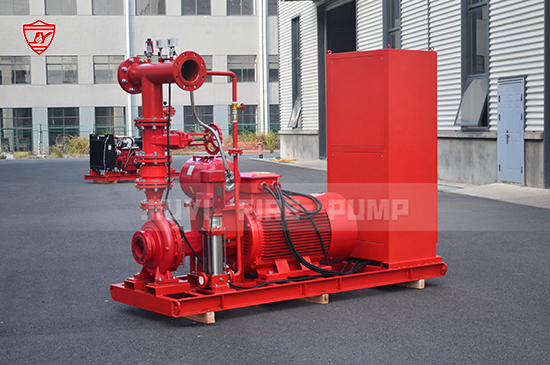In fire protection systems, the fire pump is a critical component that ensures water flow during an emergency. Fire pump testing is essential to guarantee that these pumps perform optimally when needed most. Regular testing not only ensures compliance with industry standards but also helps identify potential issues before they become a risk.

Fire pumps are designed to deliver high-pressure water to fire suppression systems during a fire emergency. Without reliable performance, these pumps could fail when they are needed the most, putting lives and property at risk. Testing ensures that the pumps are ready to operate at full capacity in the event of a fire.
There are several key tests conducted to ensure fire pumps are working properly:
Flow Test: This test measures the pump’s ability to provide sufficient water flow under the required pressure.
Pressure Test: Ensures that the pump can maintain the required pressure level during operation.
Endurance Test: This checks the pump’s performance over a longer period to simulate real emergency conditions.
Acceptance Test: Conducted after installation to verify that the fire pump meets the manufacturer's specifications and local regulations.
Fire pump testing must adhere to strict standards to ensure safety and compliance. The NFPA 25 standard, "Standard for the Inspection, Testing, and Maintenance of Water-Based Fire Protection Systems," outlines the frequency and methodology for testing fire pumps. Similarly, the UL 448 certification ensures that fire pumps meet safety and reliability standards.
To maintain optimal fire pump performance, follow these best practices:
Regular Testing: Fire pumps should be tested annually, with additional tests after installation or major maintenance.
Proper Documentation: Keep detailed records of all tests, including results and any repairs or maintenance performed.
Qualified Technicians: Always employ trained professionals to conduct testing and maintenance to ensure compliance with standards.
Ongoing Maintenance: Regular maintenance helps identify potential issues before they escalate. This includes checking for signs of wear and tear, monitoring pump performance, and ensuring that all components are functioning correctly.
Fire pump testing is essential to ensure the reliability and safety of fire protection systems. By adhering to industry standards and implementing regular testing and maintenance, you can help protect lives and property in case of an emergency. Ensuring your fire pump is tested and ready is an investment in safety that cannot be overlooked.